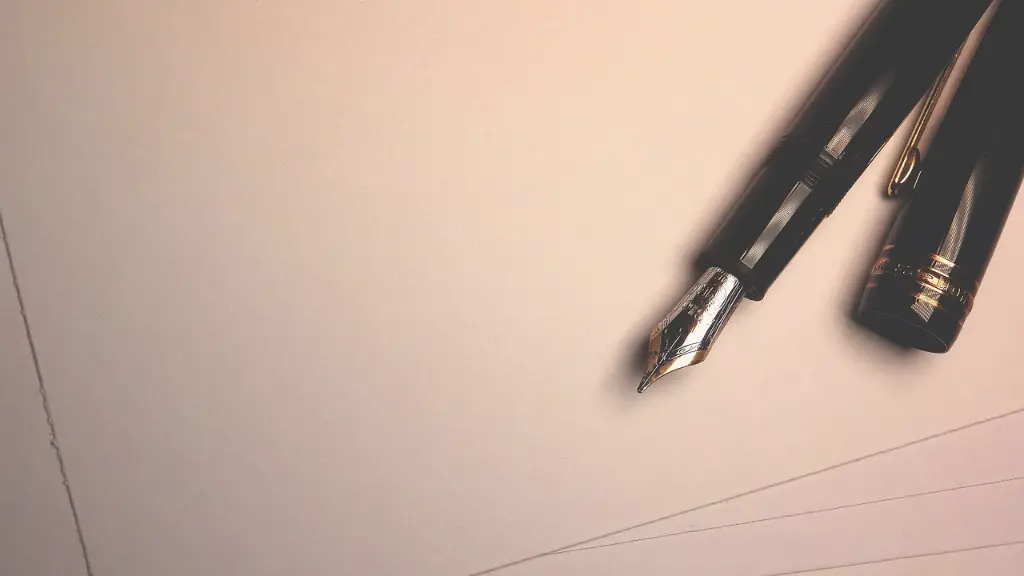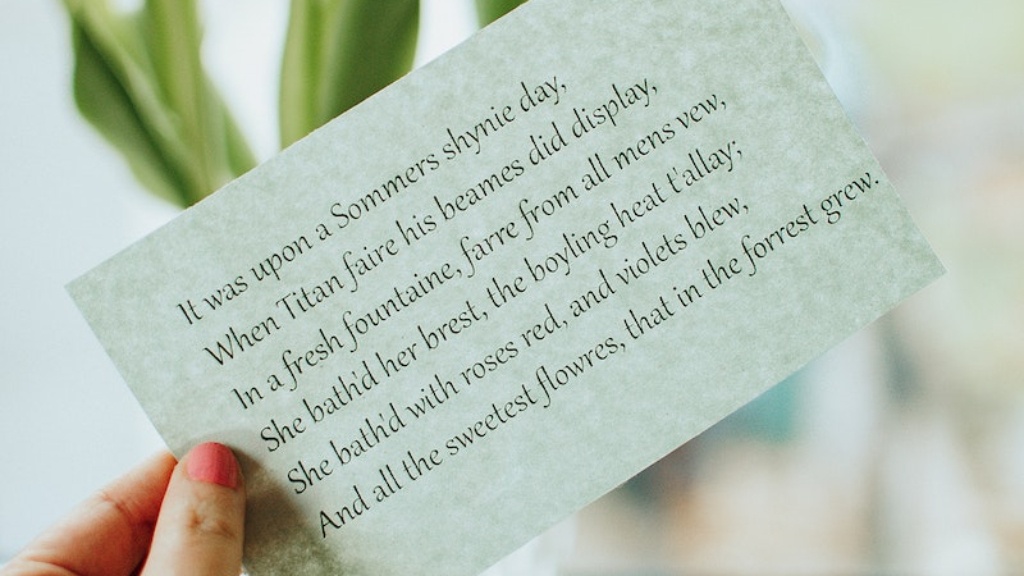What is Haiku Poetry?
Haiku poetry is an ancient form of Japanese poetry that was originally used to capture impressions of nature. The form is composed of three lines, with the first and last line containing five syllables, and the middle line containing seven syllables. Haiku poems also typically have a seasonal reference, as the idea behind haiku is to express the beauty and transience of life in nature. It is a poem that expresses a moment’s experience in a simple way, often involving a metaphor.
Requirements for Writing a Haiku
In order to write a haiku, there are a few basic rules that must be followed. Firstly, the poem must contain three lines that express a single image or moment. Secondly, the poem must use only 17 syllables and should not include rhyme. Additionally, the poem should include a ‘cutting word’ which serves as a punctuation and changes the flow of the poem. Cutting words are often comparisons, contrasts or cause and effect relationships.
How to Create a Haiku
The first step in creating a haiku is to choose a topic. Decide if you want to write about a specific experience, person, place or emotion. Make sure the topic evokes a strong image or emotion that can be expressed in a single moment. The next step is to brainstorm possible words and phrases that capture this moment. As you brainstorm, try to narrow down the words and phrasing to ones that are the most concise yet still convey the desired emotion. Once you have created a list of words, break them into three lines of five, seven and five syllables in length. If your poem does not seem to fit the syllable pattern, try rearranging the order of the words or replacing them with a better alternative. Finally, add a cutting word that serves as a puncation between the first and second lines of the haiku.
Common Mistakes to Avoid
When writing a haiku it is important to avoid common mistakes. Firstly, avoid the use of similes and metaphor, as these are literary devices that are often used in traditional haiku style. Secondly, try to write without adding any specific nouns. Rather, focus on the overall impression of the moment or image. Another mistake to avoid is using too many adjectives and descriptions. Often, the best haiku poems are the ones that are the clearest and most concise. Finally, it is important to avoid the use of rhymes in a haiku as this detracts from its simplicity and beauty.
Benefits of Haiku Poetry
The simple yet beautiful form of poetry that is haiku has many benefits to its writers. Firstly, it provides writers with an avenue to express powerful and difficult emotions in a concise and meaningful way. Additionally, writing a haiku can also be a source of creative inspiration as it encourages writers to think of new ways to express a particular emotion. Writing haiku also allows writers to explore the beauty of nature and the fleeting moments of life, giving them a greater appreciation for the world around them.
Inspiring Ideas for Haiku Poetry
When looking for inspiration for haiku ideas, it can be a good idea to draw on memories or experiences from your own life. If you have had a particularly meaningful experience, consider using it as the basis for a haiku poem. Additionally, it can also be helpful to look at traditional haiku poems for inspiration. Try to pay attention to the words they use and the way they are structured to get an understanding of how to create a meaningful and powerful poem.
Comments from Experts
According to Professor Charles Clark of Kyoto University, “Haiku is the essence of our culture. Its unique simplicity and power of expression is what makes it so captivating and timeless. Haiku is a form of poetry that expresses a moment of beauty and awe in a short, yet impactful way. It is a powerful form of communication that can be used to capture an image or emotion in a single moment.”
Applying the Principles of Haiku
Learning the basic principles of haiku can help writers create powerful and meaningful haiku poems. Firstly, it is important to understand the structure and the purpose of haiku poetry. Secondly, it is important to focus on having concrete images and emotions that capture the single moment. Additionally, it is important to keep the poem concise and clear and to avoid the use of literary devices. Finally, it is important to draw on personal experiences and memories for inspiration and to use traditional haiku as a resource as well.
The Influence of Nature on Haiku Poetry
Nature is a common theme in haiku poetry as it is often used to represent beauty and the transience of life. Haiku poetry is typically written using simple imagery and language in order to capture an image or emotion that is inspired by nature. By using the natural world, haiku poets aim to capture a moment of beauty in a single snapshot. Additionally, the use of nature can also represent the cycle of life, with the themes of growth, change and death often recurring.
Relevance of Haiku Poetry in Modern Times
Haiku poetry is still a relevant and meaningful form of poetry today. Although the concept of Haiku was originally popularised in Japan hundreds of years ago, its emphasis on capturing a beautiful moment in just a few words lends itself well to modern society. The beauty and brevity of haiku make it an ideal form of expression for today’s fast-paced world. Additionally, the symbolism and imagery used in haiku can often be evocative and powerful, making it an effective way to communicate an emotion or feeling.
Sharing Haiku Poetry
Haiku poems can be shared in many different ways. They can be written on paper, posted in an online forum, or shared via social media. However, one of the most popular ways to share haiku poetry is through tanka. Tanka is a form of poetry that is composed of five lines and typically consists of 31 syllables. Haiku poems can be written as tankas as well, allowing the writer to use a longer format to elaborate on their single moment of beauty or emotion.
Improving Haiku Poetry Writing Skills
Writing haiku can be a great way to exercise creative writing skills and to explore emotions. To improve one’s haiku writing skills, it is important to continue to practice and write regularly. Additionally, it is also helpful to read and analyse other haiku poems. Looking at the words, phrases and structures used by other poets can be a great way to learn and improve on your own haiku writing.
Using Wordplay in Haiku Poetry
Wordplay is an effective tool for making haiku poems more meaningful and powerful. By using wordplay to make comparisons and contrasts between words, phrases and images, the writer can draw more attention to the single moment or emotion that they are trying to capture. Additionally, the use of wordplay can also add layers of complexity to a haiku poem and can make the poem more interesting and captivating.



